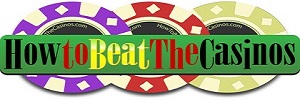How Slot Machines Really Work—And What You Can Actually Do About It
I used to think I understood slots. Like most players, I’d pick machines based on feel—maybe one I had luck with before, maybe one that “looked due,” or maybe just whatever was free and flashing the brightest. But once I started digging into how slot machines actually work from the inside out, everything changed. And if you’re serious about not getting fleeced by these machines, you need to understand the basics too.
First off, forget everything you think you know about patterns. Slot machines don’t “warm up.” They don’t “reward loyalty.” They’re not “on a cycle.” Every spin is controlled by a random number generator (RNG) that’s constantly cycling through millions of number combinations—whether you’re playing or not. The second you press that spin button, the RNG stops and spits out an outcome. That’s it. Simple, brutal, and completely unpredictable.
But here’s where it gets interesting: those outcomes are weighted. That’s right—not all symbols have the same chance of showing up, even if they appear equal on the reels. The system behind the screen might make it look like you almost hit that jackpot over and over—but it’s designed that way. The computer maps the probability behind the scenes, and what you see on the reels is just a pretty display for what the software has already decided.
Knowing this, I stopped chasing “near misses.” That one symbol just above the jackpot line isn’t a sign that I was close—it’s part of the design to keep me spinning. It’s psychological bait. The machine is built to give you just enough reward to feel like you’re progressing, while slowly draining your credits. If you’re not aware of that, you’ll fall for it every time.
The good news? Once you understand this, you can shift your focus from “winning the machine” to “managing your play.” Look for games with clear payout structures. Avoid the overly flashy, cinematic ones with tons of mini features and hidden volatility. Those games usually come with lower overall payback percentages, because they spend more on the spectacle and less on the player returns.
And here’s a pro tip: don’t ignore the denomination. Generally, higher-denom machines (like $1 or $5 slots) have better payback percentages than penny slots. Casinos know penny players are in it for entertainment, so the edge is higher. If your bankroll can handle it, it’s better to play fewer spins on a higher denom than to stretch yourself thin on a penny machine that pays 85% over time.
I also started timing my sessions better. Shorter bursts, clear stop-losses, and small win goals. I don’t camp at a machine for hours anymore. That’s a quick way to burn through your money and your mood. If I double up quickly? I walk. If I lose half my stack? I walk. The machine doesn’t care about me—so I have to care for myself.
Another thing I never do anymore? Chase bonus rounds. If a game hasn’t hit in a while, that doesn’t mean a bonus is “due.” RNGs don’t have memories. That next spin could trigger it—or it could take another 500 spins. Betting more to “force” the feature is like pouring water into a bucket with no bottom.
So what’s the secret to winning at slots? There isn’t one. But there is a strategy to playing smarter. Know the odds. Choose better games. Set limits and actually stick to them. Don’t play emotionally. Don’t let the machine trick you into thinking you’re in control—because you’re not.
But when you understand how they work, you can take your power back. You can treat it like entertainment, not a hustle. And every now and then, you’ll hit something sweet—and instead of giving it all back, you’ll know when to cash out and smile.
This is Dave from HowToBeatTheCasinos.com, pressing spin with eyes wide open—and always with one hand on the cashout button.

